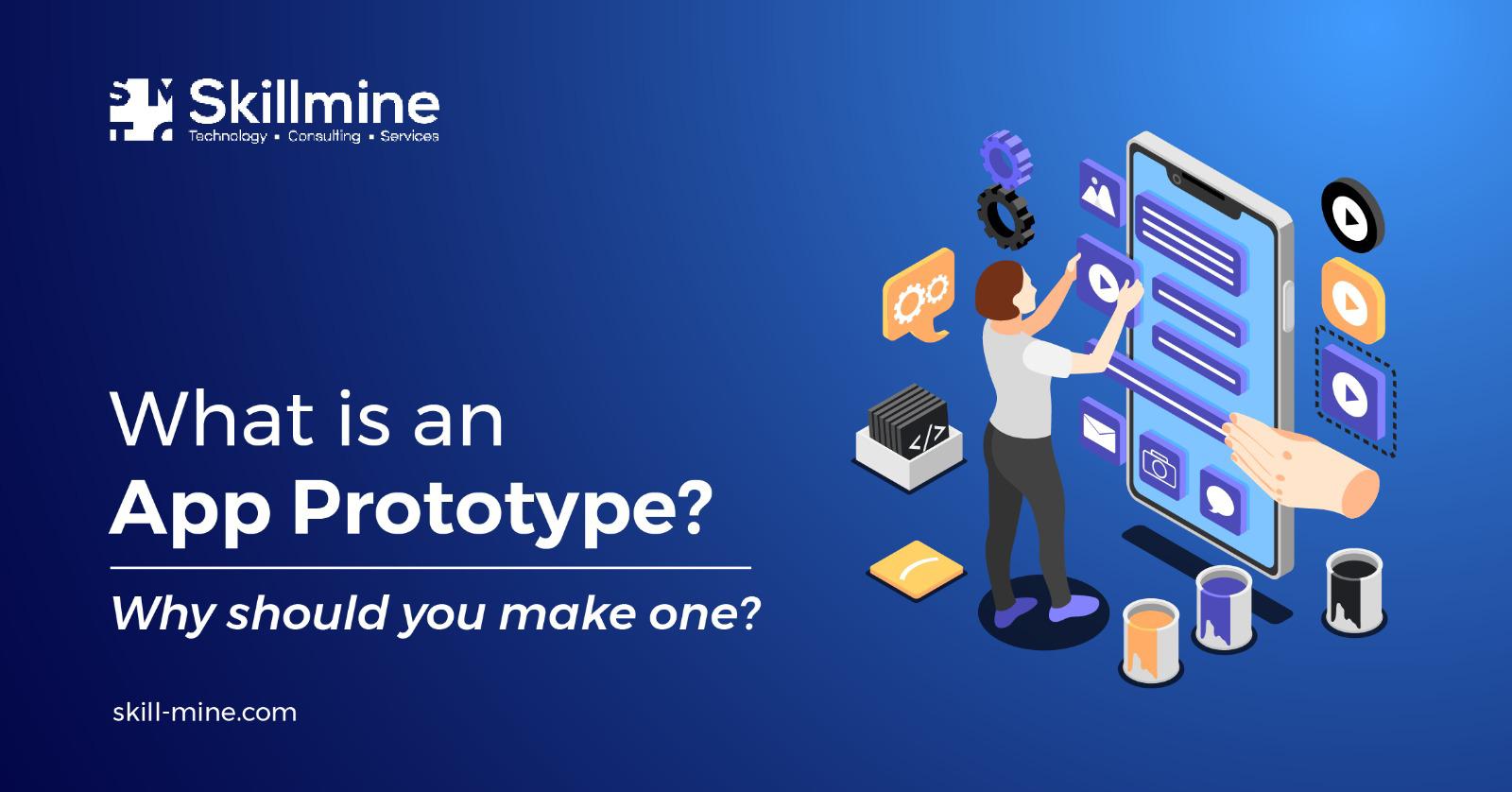Successful mobile applications always come with innovative ideas. But to build a successful app, you need more than just a one-of-a-kind idea – you need to raise money, create a great app design, use an advanced technology stack, and make your app appeal to the target audience. Making sure that the app’s features and intuitive design solve the user’s problems and provide the best experience ahead of launch is a difficult task.
What is the best way to create an MVP version of the app? By using mobile app development, we can test the waters with our beta version and get feedback from our customers. This will help us impress potential investors.
What is meant by App Prototype?
An app prototype is a visual representation of what your product will look like. It can help you understand the functionality and design of your app, and it can be useful in different stages of the project.
Significance of app prototype for businesses
Not only do app prototypes make your product more realistic for investors, but they also give your testers the ability to get a real sense of what it would be like to use the app, and provide your developers with a better understanding of the intended user experience before finalizing the design.
Reasons why businesses should prototype their idea first
Enhanced Clarity
Perhaps the most crucial aspect to have before beginning app development is clarity regarding what you will ultimately build. Without a visual aid, it is notoriously difficult to achieve a shared understanding of intended functionality, user flow, and even look and feel, which is why an app prototype can be so helpful.
Before spending money to develop the app, all stakeholders can view and interact with it by developing its interface, and visuals in the prototype, ensuring that the app’s overall goal is achieved.
Ease of convincing stakeholders
Getting stakeholder alignment is one of the hardest parts of developing a mobile app for enterprise organizations. Often, there are multiple stakeholders involved with decision-making power; some are very tech-savvy, while others question the necessity of pricey digital technology.
One thing is for sure: showing a room full of people exactly what an app will look like and how it will work will be much more persuasive than reading through a list of functional requirements and promising them that it will be fantastic. Having a visual aid can be crucial to proving value, particularly when there may be multiple stages of internal stakeholders to present to.
Better Coordination
Teams can work together and iterate quickly and effectively using prototypes. Since all work is done in design rather than development, change rounds can be completed much more quickly. Clients are encouraged to request multiple rounds of changes until the app is ideal because iterations of the prototype can be released multiple times each week.
As the project moves into the development phase, ongoing discussions among UX designers, product owners, and developers guarantee that the solution put forth in the prototype will satisfy all parties.
Improved Transparency
A prototype is also used as a reference for developers, ensuring that the app is as close to the promises made to the team. If a prototype is powerful enough to show what the finished product will look like, then the design process that has led to it is worth documenting in a functional specifications document.
Creating better user experience
If you want people to use your app long-term, you need to provide a great experience that helps them get what your app offers them. A recent study has shown that around 21% of people who download apps use them only once- so it’s important to focus on retaining users and understanding their behavior. With a prototype, businesses can observe user interaction with your app early on, and make adjustments to their app to improve the user experience.
Cost-Effective
Prototyping your app before building it can be expensive. It’s important to be clear about what you’re building and why before you start – there are often multiple rounds of feedback and iteration required before the perfect solution is agreed upon. However, if an app is built and it’s found that it doesn’t meet the originally intended requirements and needs to be rebuilt, it can be very expensive.
Even if the prototype has to go through several rounds of feedback, the end result will be much cheaper than if you have to go through even a single unexpected change round in development. Including the prototype phase, the unknowns and risks are front-loaded – mistakes can be made, extra change rounds can be added, and the project can be completely reset – and the project can still result in a successful app that comes in on time and on budget.
Smooth workflow processing
Once the team has agreed on a common vision for the application, as demonstrated by the prototype, development becomes more predictable. First, the development team will be able to make more accurate calculations. If developers can click on interactive prototypes while reading functional specification documents, it’s easier to get a full overview of what’s being built. These higher-precision calculations determine project schedules and budgets, which in turn would be more secure without prototypes.
Feedback be used for future upgrades
By creating a prototype, you can explore new ideas and improve your concept early on in the development process, which will help your development team find potential weak spots and errors. This information can be valuable in creating an addictive app for your target audience, as you can track user interactions, errors incurred, and each version/version update. This way, you can create a valuable reference for future development.
For example, you can create a backlog of different versions of your app and compare the different errors your users experienced. You can also implement features that provide feedback from your audience, such as a survey or poll. This feedback can be used to further develop the app based on their needs. In this way, you can make the app more enhanced and successful at the launch of the final product.
Final Thoughts
The mobile app is a big challenge for new companies, given the high development cost and levels of success. This can lead to significant budget overruns and disappointment in the final product, which is why a prototype is created first. It’s important to remember that a prototype is not a complete solution, but it does provide a visual concept, a correct understanding of the client’s idea, and a response from the target audience.
An interactive prototype or layout allows you to see the product from the outside early on in development, which can help estimate the cost of the project and promote mutual understanding among all project participants. It can also attract the attention of investors, and potentially save a lot of time and money.
Does your business need assistance in creating a custom mobile app development for your business? Look no further than Skillmine, with over a decade of experience helping various companies build custom apps that fit their business needs. Our experienced team can easily understand your business needs and create a mobile app that will meet your expectations and beyond.
Looking for expert technology consulting services? Contact us today.





